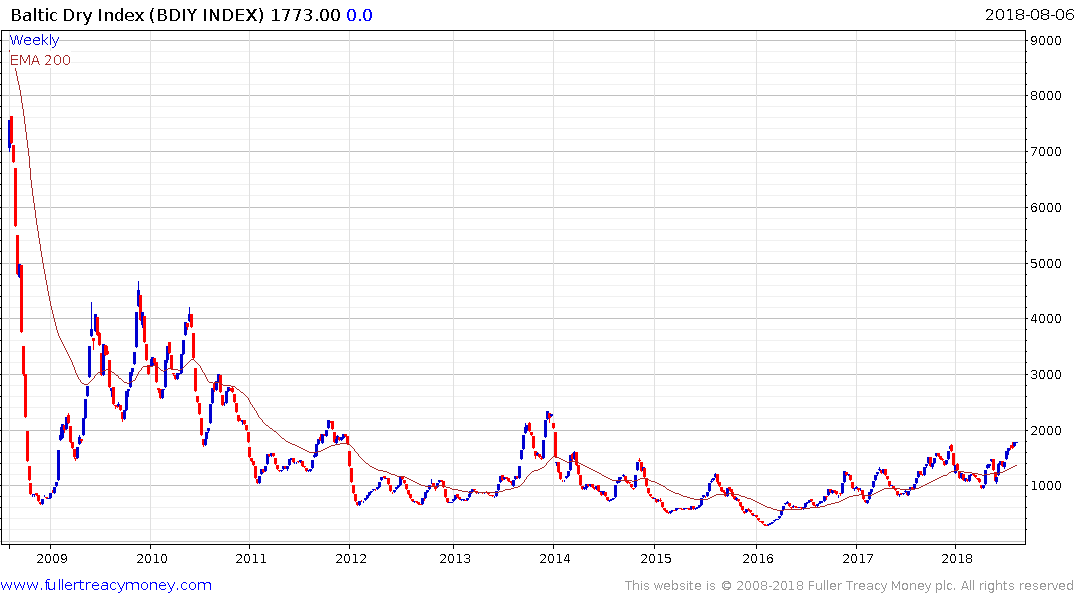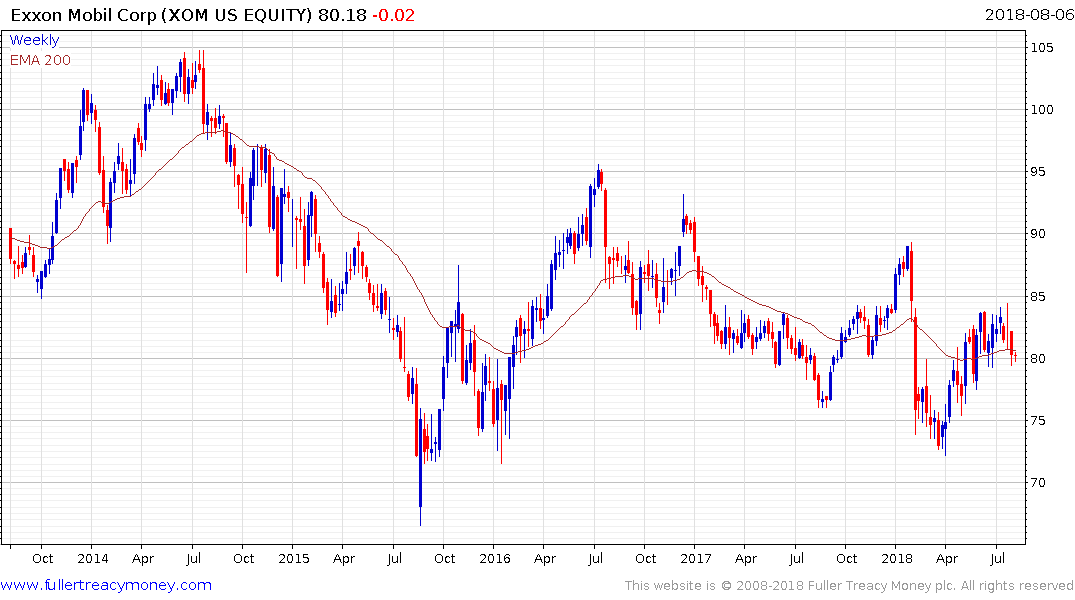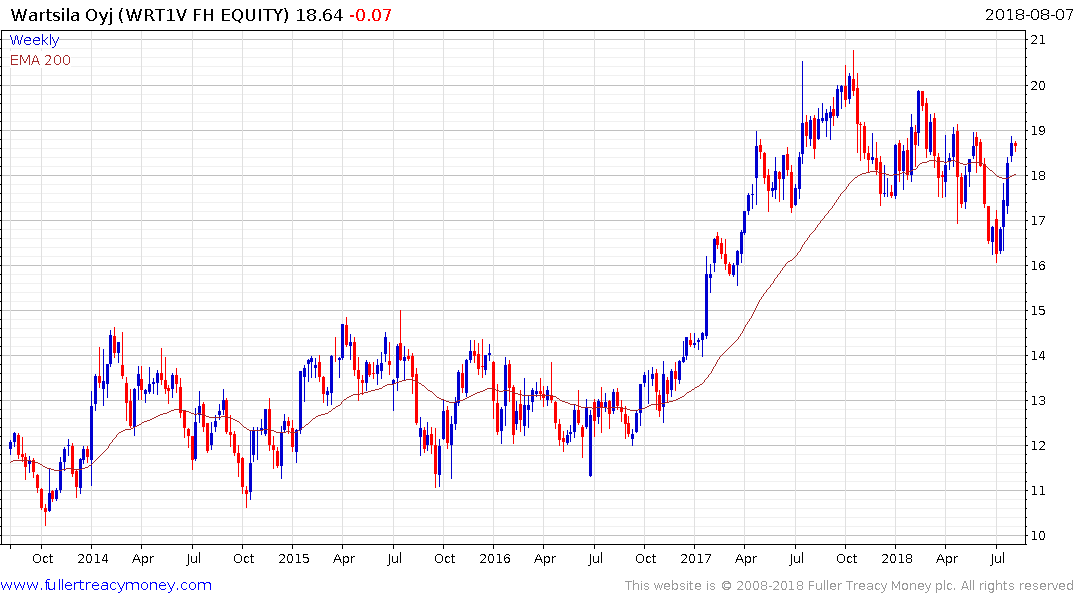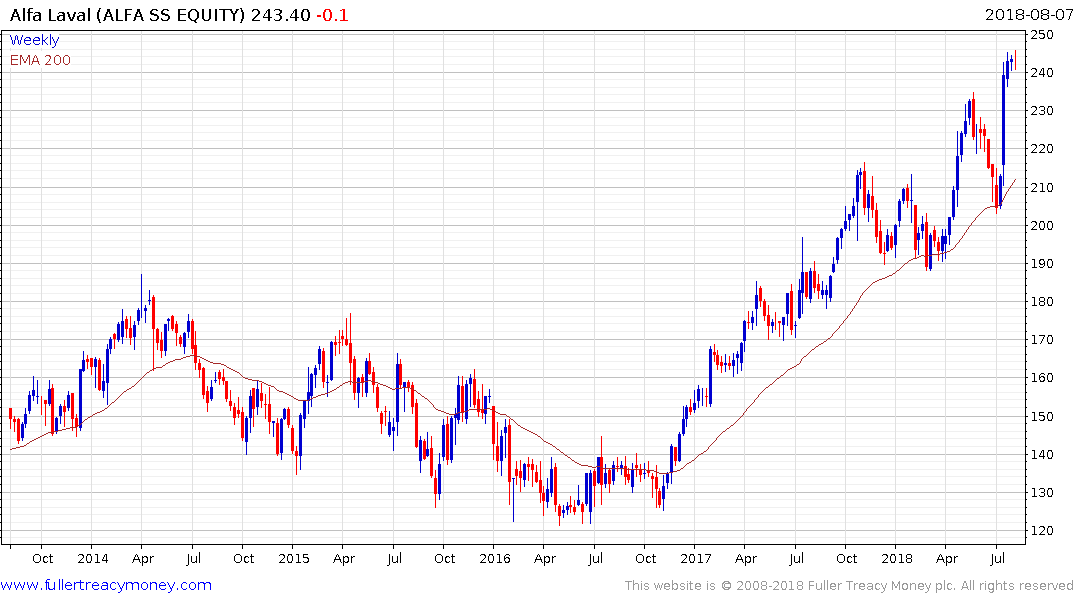Musings From the Oil Patch August 7th 2018
Thanks to a subscriber for this edition of Allen Brooks’ ever interesting report for PPHB which may on this occasion focuses on the impending IMO 2020 regulations for ship emissions. Here is a section:
Here is a link to the full report.
Here is a section from it:
According to Mr. White, pricing, availability and access will also play a role in blends beating out distillates. With only 2% of the current fuel market composed of fuels that comply with the 0.5% sulfur cap under IMO 2020 regulations, he expects the decline in price on the 98% of HSFO to boost the likelihood of increased fuel blending. “Come January 2020, if you are a blender of fuel, you will have access to very low-cost HSFO. Sulphur is a linear blend, and if you are blending with a typical distillate – an ECA [emissions control area compliant] fuel at 0.1% sulfur content – it takes about 80–85% high-sulfur fuel to 15% low-sulfur fuel ratio and you can make a compliant fuel out of that.” Mr. White furthered his argument that blending will become a meaningful solution for meeting IMO 2020 by estimating that blended fuels would cost 10-15% less than straight distillate fuels.
To assess the impact of the IMO rule on refiners, Stillwater points out, based on BP plc (BP-NYSE) statistical data for 2016, that global refinery throughput was 80.6 mmb/d, with fuel oil production at 8.0 mmb/d and distillate production, excluding kerosene and jet fuel, at 27.5 mmb/d. The U.S. Energy Information Administration (EIA) put global marine fuel use in 2016 at 3.9 mmb/d. That year, U.S. refineries produced only 418 thousand barrels per day of residual fuel. About 25% of the U.S. production was fuel oil with less than 1% sulfur content. With U.S. residual fuel representing only 2.6% of crude runs in 2016 compared to a 9.5% share of global refining output excluding the U.S., the new IMO fuel rule will have a much greater impact on international refiners than on U.S. ones.

The Baltic Dry Index has base formation characteristics and exhibits a rounding characteristic associated with accumulation over the last five years. The pace of scrapping older ships is increasing as shipping rates are low and scrap prices are high so that will create a supply inelasticity environment eventually. Retrofitting costs of older ships both to comply with tighter emissions standards and new ballast water regulations mean the pace of scrapping is likely to increase.

The part of the refining sector that is capable of adapting to the change to is likely to benefit considerably from this evolving situation. Exxon Mobil has been subject to a lot of choppy trading activity over the course of the two years but the most important consideration is that the progression of major rally highs remains intact. While the share is currently rebounding from its most recent pullback, it will need to sustain a move above $90 to confirm a return to medium-term demand dominance.
Wartsila and Alfa Laval are two of the largest producers of marine scrubbers with the latter stating it is sold out of supply for next year.

Wartsila hit a medium-term peak in October and has held a progression of lower rally highs since. It is now challenging that sequence and a sustained move above €19 would signal a return to demand dominance.

Alfa Laval remains in a reasonably consistent medium-term uptrend and while somewhat overbought in the short term, a sustained move below the trend mean, currently near SEK212, would be required to question medium-term uptrend consistency.


